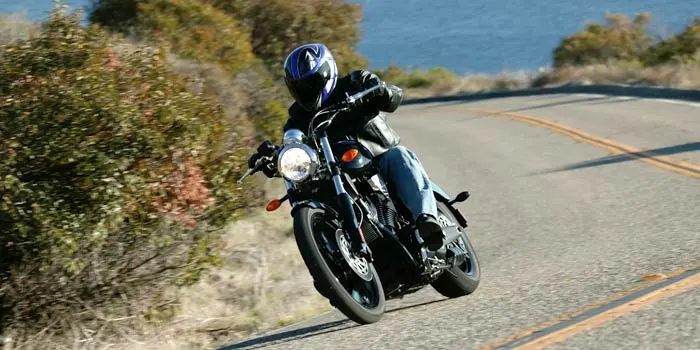The Motorcyclist’s Guide to Insurance


We get it. Riding your bike is about the freedom of the open road. The rumble of the engine, the feeling of fresh air in your face, and the pure joy of riding down the road. Whether you’re seeking adventure or you’re just looking for a way to get around town, there’s nothing quite like driving a motorcycle. But you never know what is around the bend, and the last thing you want to think about is an accident. As with a car, you’ll need insurance to protect yourself, your passengers and your bike! Here’s your complete guide to motorcycle insurance.
There is a lot to consider when purchasing motorcycle coverage. Your coverage should be as personalized as your bike. Do you just want to protect yourself and your passengers? What about the bike itself? Would roadside assistance be helpful?
Property Damage Liability and Bodily Injury: Coverage protects you if someone is injured as a result of an accident or covers damage to the property of others by your motorcycle.
Comprehensive: Coverage pays for damage to your personal motorcycle due to something other than a collision, such as a fire, theft, hail or vandalism.
Collision: Pays for damage to your motorcycle resulting from a covered accident.
Medical Payments: Coverage pays the cost of medical care you receive as a result of a motorcycle accident and can be used regardless of who is at fault. This coverage varies by state so ask your insurance agent for details in your area.
Uninsured and Underinsured: Protects you and your passengers from bodily injury caused by other drivers without adequate auto insurance.
You took great care in selecting the perfect ride, right? Whether you ride a touring bike, sport bike, cruiser or standard, the proper coverage can make sure you’re protected no matter which of these rides you chose.
Chopper: As the term “Chopper” implies, the motorcycle is derived by chopping off or removing parts from a typical cruiser with the intent of reducing weight or bulk for the sake of speed.
Cruiser: Cruiser motorcycles mimic the style of earlier American motorcycles from the 1930s to the early 1960s, such as those made by Harley-Davidson and Indian. Although cruisers have benefited from advances in technology and metallurgy, the basic design is still very similar to early motorcycles.
Off-Road: Off-road motorcycles generally are light weight with small displacement engines. The suspension travel is longer than a typical motorcycle, with higher ground clearance. Their construction is rugged, simple and without bodywork and fairings.
Standard: Many standard motorcycles are, as the name implies, more basic. Riding positions typically are upright and similar to that of a cruiser, but with foot pegs placed farther rearward. The riding position, coupled with better ground clearance than a cruiser, gives standard motorcycles better handling characteristics. Engine displacements are smaller than those for cruisers.
Sport: Sport class motorcycles are light and powerful. Their power-to-weight ratios are second only to the super sport class. They benefit from advances in design and technology intended for racing; however, they are not considered racing specification machines.
Touring: Touring motorcycles are among the longest and heaviest motorcycles, often weighing more than 800 pounds. Touring motorcycles offer wind protection for the rider, high-capacity fuel tanks, the ability to carry luggage and an upright riding position that is comfortable for long distances.
Trike: Trikes are typically cruiser or touring two-wheel motorcycles that are converted to three-wheel units.
As you can tell, most types of motorcycles can be covered by insurance. In general, a bike with two or three wheels that is designed for use primarily on public roads and factory built vehicles can be covered. However, there are a few things that may disqualify you from coverage:
- Vehicles other than of standard, factory-built type, i.e., "show bikes"
- Extensively customized bikes
- Homemade constructed trikes
- Motorcycles used commercially or for parade purposes
Many insurance companies offer a discount for carrying motorcycle insurance and one other type of insurance policy with them, such as auto or homeowners insurance. With Farm Bureau Financial Services, you can bundle your motorcycle insurance with auto and/or home insurance and enjoy the convenience of Farm Bureau Member’s Choice coverage featuring one policy, one premium and one deductible.
There may be some fantastic safety rider courses in your local community. Ask for safety discounts if you’ve taken a safety course, are an older rider or park your motorcycle in a parked garage.
Whether you ride for business or pleasure, protect your bike with customized motorcycle insurance with Farm Bureau Financial Services. Ask your local Farm Bureau agent to find out more today.
Sources:
http://www.motorcycle-usa.com/2009/07/article/motorcycle-insurance-guide/
https://www.nerdwallet.com/blog/insurance/motorcycle-insurance/